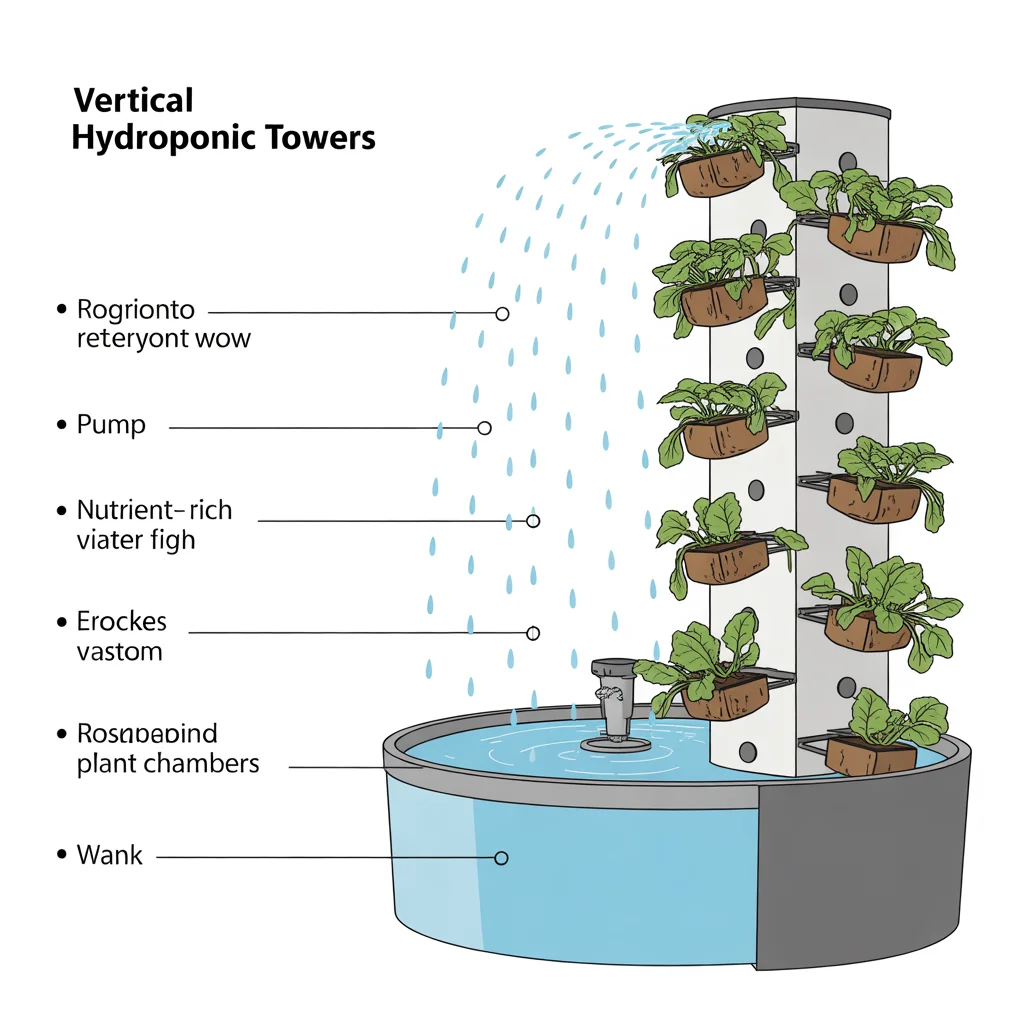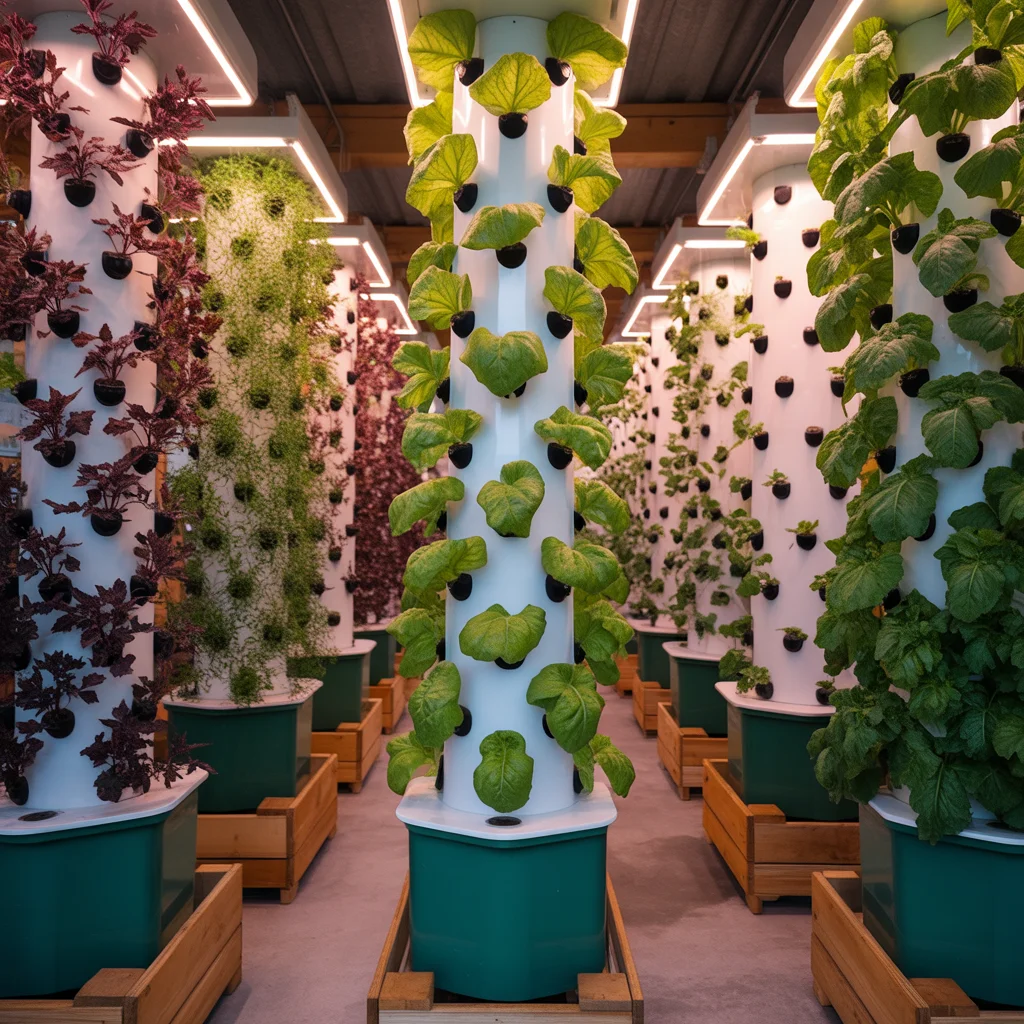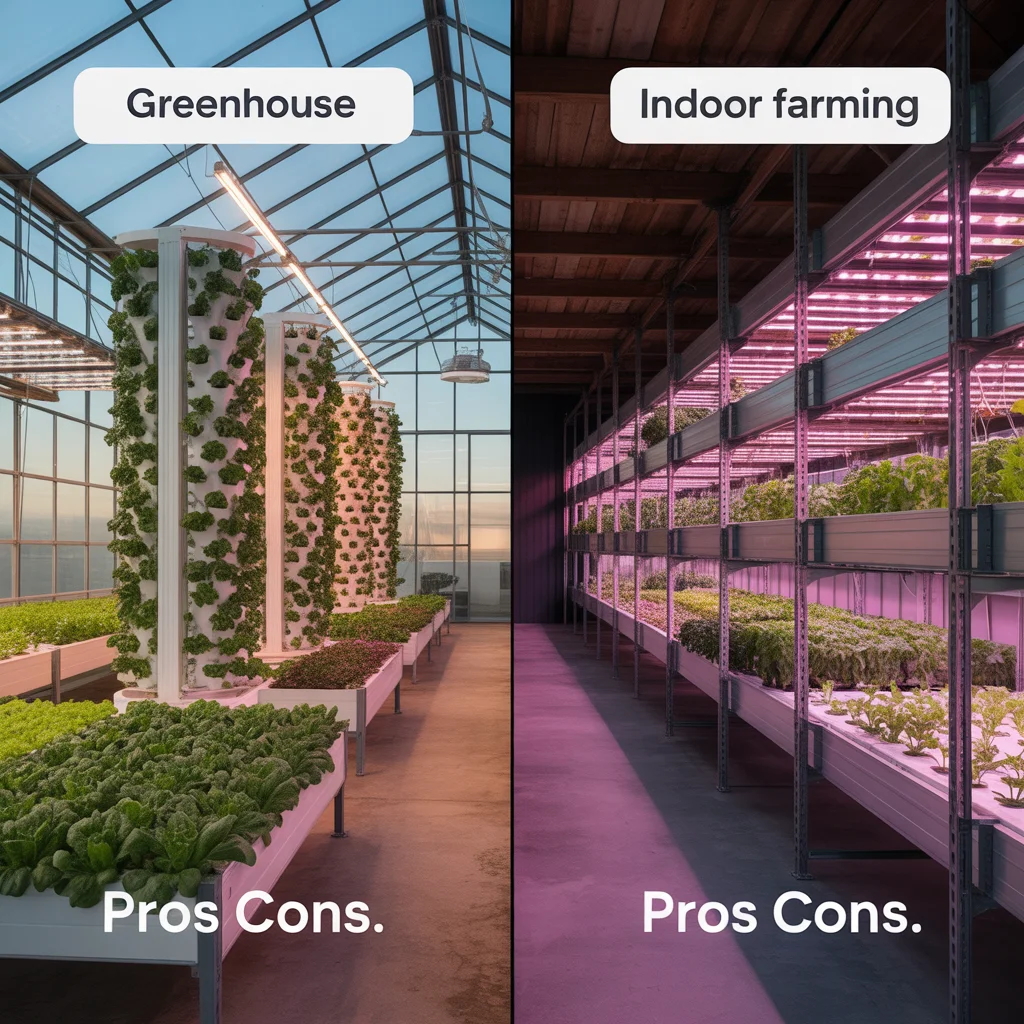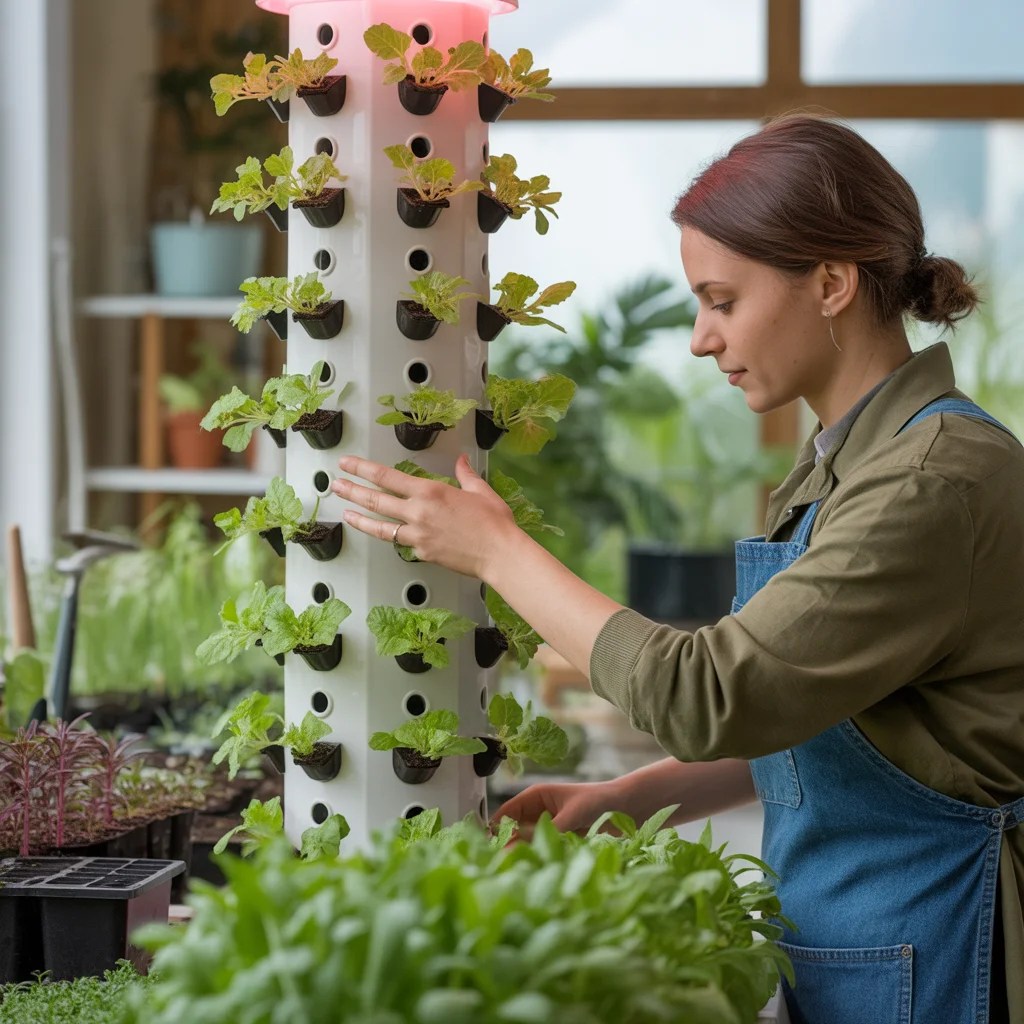The vertical aeroponics tower is basically a total game-changer if you’ve got—well, a postage stamp for a backyard or maybe none at all. Let’s be real: I started looking into growing food indoors after basically killing every basil plant I ever touched. Ever tried stuffing a bunch of pots in a tiny kitchen? Total chaos. That’s what made aeroponic towers seem sorta—almost magical, honestly. By the way, if you want to do more digging on other setups, check out 7 best hydroponic tower systems to grow food and also bag a few nuggets from hydroponic tower best 5 tips for growth.
Table of Contents
How do Vertical Aeroponics Tower work?
A vertical aeroponics tower is a soil-free growing system where plants grow in stacked layers with their roots suspended inside a tall, upright structure. Nutrient-rich water is misted directly onto the roots, allowing the plants to grow quickly and efficiently using very little space and water. It’s perfect for urban gardening or indoor farming.

Okay, so here’s the bare-bones rundown (without all the geeky words):
- Plants go in little holes along the sides of this tall, narrow tower, not dirt.
- Nutrient-packed water—think Gatorade for veggies—runs up and trickles down.
- Roots hang in midair most of the time, soaking up the perfect amount of water.
- They use space way better than regular soil pots. Like, crazy better.
My cousin saw one and said, “Wait, those are flying roots?!” Pretty much, dude. Let’s just say, no muddy shoes.
The benefits of using a vertical aeroponics tower:
- Space-saving – Perfect for small areas like balconies or rooftops
- Water-efficient – Uses up to 90% less water than traditional gardening
- Faster growth – Nutrients go straight to the roots, so plants grow quickly
- Cleaner and low-maintenance – No soil means fewer pests, weeds, or mess
It’s an eco-friendly, high-yield option for growing fresh food year-round.
Aeroponic Tower Cultivation Guide
Honestly, don’t stress. You don’t need a degree to get this thing going.
- Stick the tower where it gets decent light—natural sun or grow lights.
- Mix up your nutrients—follow the bottle, no need to overthink it (trust me, I learned the hard way).
- Drop seeds or baby plants in the slots, keep the water topped up, and watch roots dangle and thrive.
- Check stuff once a week. Yes, even if you’re lazy.
Here’s a quick table I scribbled up last time my neighbor asked:
| Step | What To Do | How Often |
|---|---|---|
| Add Nutrients | Mix with water (per instructions) | Every 2 weeks |
| Check Water | Refill as needed | Weekly |
| Inspect Plants | Look for healthy roots & leaves | Weekly |

Vertical Farming with Aeroponics
I’ll say it: vertical growing is like apartment gardening on rocket fuel.
- You can stack these things and make crazy use of your little space.
- Lettuce, herbs, strawberries—yep, even in a crummy basement apartment, not kidding.
- This farming is more sustainable—less water, less fertilizer, less mess everywhere.
- Super cool for people interested in sustainable urban gardening with a hydroponic tower, trust me.
“I used to think nothing grew well indoors—this tower changed my mind. Now I eat salads that taste way fresher than anything from the store.” – Sam, city dweller

Climate-Controlled Greenhouses vs. Indoor Farming
Bit of a hot debate, this one.
- Climate-controlled greenhouses keep temps and humidity perfect—honestly, it’s like a five-star resort for your kale.
- Indoor farming is great for city folks, but can get expensive with all the lights.
- Both methods pair brilliantly with aeroponics, depending on your space and budget.
- I say, don’t overthink—go with what fits your lifestyle. (I nixed greenhouses in my apartment. Shocker.)
Crop Yields: Aeroponic Tower Farming Output
If you’re wondering how much you can squeeze out of a tower, I’m gonna be blunt. More than you think.
- Lettuce? You’ll have more than you can eat. Trust me, I regretted planting too much once—total lettuce tidal wave.
- Plants like basil, mint, and chard go nuts (in a great way).
- On average, you’ll get 2–3 times more yield than in soil (not kidding—ask anybody who’s tried it).
- Want to geek out further? Here’s a cool deep-dive on vertical gardening: grow more in less space.
Make Your Own Hydroponic Nutrients
Ready for a DIY experiment? You can actually mix your own plant “food”—not that hard!
- Start with basic fertilizer salts—nitrogen, phosphorus, potassium.
- Use clean water and measure carefully—too much can burn roots, yikes!
- Google a legit recipe or check out mastering hydroponics and aeroponics for more details.
- If you mess up (I did, lots), most plants bounce back if you catch it quick.
What are three disadvantages of aeroponics?
High initial cost – Aeroponic systems need special equipment like misting nozzles, high-pressure pumps, timers, and sensors. Compared to soil gardening or even hydroponics, the upfront cost is much higher.
Needs constant monitoring – Since plant roots are suspended in air, they rely completely on regular misting for water and nutrients. If the system fails—even for a short time—plants can dry out and get damaged quickly. There’s little room for error.
Depends on electricity – Aeroponics systems run on power to keep the misting schedule and environment stable. If the power goes out and there’s no backup, your plants may not survive. That makes having a generator or battery backup almost essential.
Quick reality check, so you’re not blindsided:
- Power outage? Uh, roots can dry out fast (like, hours). No bueno.
- System setups cost a bit up front—definitely not a “pennies on the dollar” project.
- Need to babysit the water and nutrition mix (not crazy, but don’t forget for a week).
Is vertical farming aeroponics?
Not always—aeroponics can be used in vertical farming, but they’re not the same thing.
Vertical farming is a method of growing crops in stacked layers to save space, often indoors under controlled conditions with artificial lighting. It can use different growing techniques, including:
- Aeroponics – where roots are suspended in air and misted with nutrients
- Hydroponics – where roots grow in water with nutrients
- Soil-based systems – less common, but possible in stacked beds
So while aeroponics is one type of system that works really well in vertical farming, not all vertical farms use it. It depends on the crop, budget, and technology the grower chooses.
So here’s the scoop (and it’s a little confusing):
- Not all vertical farms use aeroponics—some use hydroponics, some are old-school soil.
- Aeroponic towers are a type of vertical farm, yeah.
- You get the same basic benefit: more plants, less floor space.
- If anyone tells you there’s “one right way”—don’t listen!
Conclusion
Bottom line: vertical aeroponics towers flat-out make growing fresh food about as easy as it gets—even if you’re crammed in a tiny apartment or zero-yard home. They hand you bountiful greens, herbs, and strawberries (oh, don’t get me started on those). There are so many ways to try this out and loads of helpful tips on Vertical Farming | Tower Garden | Tower Farms | Aeroponics and the pros at Tower Garden. Honestly, just give it a shot—and let your windowsill finally do something worth bragging about.
Thinking of Growing Upwards? Vertical Aeroponics tower Is Totally Worth It
Frequently Asked Questions
How does nutrient delivery work in a vertical aeroponics tower?
In vertical aeroponics towers, a pump sends a pressurized nutrient solution from a reservoir to misting nozzles located inside the tower. These nozzles spray a fine mist onto the exposed roots of the plants at timed intervals. The mist contains all the essential nutrients dissolved in water, allowing roots to absorb them directly without soil. Most systems use a closed-loop design to recirculate unused nutrients, reducing waste.
What kind of maintenance is required for a vertical aeroponics tower?
Regular maintenance includes:
Cleaning nozzles to prevent clogs from mineral buildup
Flushing the reservoir weekly or bi-weekly to prevent algae and bacteria
Monitoring pH and EC (electrical conductivity) levels to keep nutrient balance accurate
Checking the pump and timer to ensure the misting cycle is functioning correctly
Because of its reliance on electronics and precise nutrient delivery, consistent upkeep is crucial to avoid root stress or crop failure.
Can I grow root veggies like carrots in a tower?
Honestly, nope. Stick to leafy greens, herbs, and maybe tiny strawberries. Carrots…not so much. but you can use containers for this purpose instead.
Can kids help?
Heck yes! It’s super hands-on and fun to watch roots grow—just make sure they don’t turn the thing into a water park.
Do I need sunlight or will any light work?
You can use grow lights, but true sunshine just hits different. If you’ve got a window, use it.

